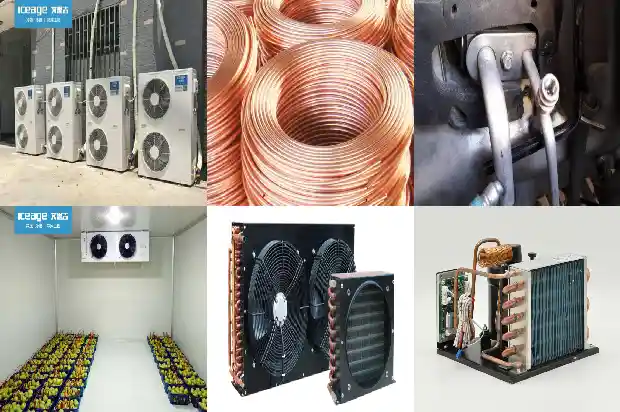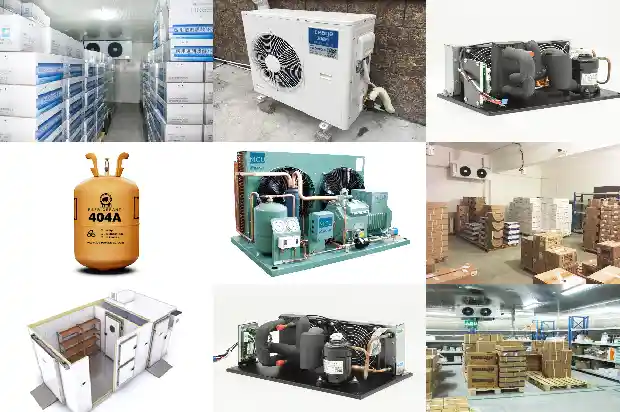Which is Better for Cold Storage: Cooling Coils or Air Coolers?
2025-02-25
The refrigeration system is the core system that differentiates a cold storage from an ordinary warehouse. The four main components - compressor, condenser, expansion valve, and evaporator - need to cooperate with each other during operation to enable the entire refrigeration system to achieve the desired effect. So, which is better for a cold storage, an air cooler or cooling coils? Today, we'll introduce the advantages and disadvantages of both, hoping to be helpful when you finalize the installation plan.
- Enclosure Structure
Regardless of whether the warehouse is of brick - concrete structure or steel - structure, the load - bearing capacity of the top needs to be considered. When designing a cold storage, the suspended load should be taken into account. The reference values for suspended load are as follows: When using seamless steel pipes to make cooling coils, the reference value for the designed suspended load is 70 - 80 Kg/㎡. If aluminum alloy pipes are used to make top - mounted cooling coils, the reference value for the designed suspended load is 40 - 50 Kg/㎡.
When using an air cooler, only the suspended load of the air cooler in the local area needs to be considered.
- Refrigerant Charge
Generally, a cooling - coil cold storage requires 2 - 4 times more Freon than an air - cooler cold storage. The larger the diameter of the cooling - coil pipes, the more the fluorine - holding capacity of the entire refrigeration system increases. - Defrosting Method
The defrosting methods available for air coolers include natural defrosting, water defrosting, electric defrosting, and hot - fluorine defrosting. Cooling coils mostly use hot - fluorine defrosting.
In addition, since cooling coils are widely distributed in the warehouse, water droplets will fall during defrosting. Therefore, during defrosting, goods usually need to be moved or covered with waterproof plastic sheets, which is not as flexible and convenient as the defrosting of air coolers.
- Cold - storage Capacity
Air coolers belong to forced convection, with a fast cooling rate; aluminum cooling coils belong to natural convection, with a relatively slow cooling rate. - Product Drying Loss
Generally, the drying loss of products stored in a cold storage with an air cooler is greater than that in a cold storage with cooling coils. However, factors affecting product drying loss include the heat - transfer temperature difference, wind speed, the operating time of the evaporator, and the packaging method. That is, for products packaged in plastic bags with a sealed package, the problem of drying loss may not need to be considered. - Efficiency and Quality Stability
Air coolers are well - defined and mature products. They are assembled by skilled workers in a factory on an assembly line, and the liquid supply uniformity is relatively good. Cooling coils need to be assembled on - site, and the assembly level of workers has a great impact on the liquid supply uniformity of the cooling coils. - Initial Investment
The initial investment in aluminum cooling coils is generally higher than that in air coolers. The larger the system, the more obvious the price difference. This is also closely related to the fact that the construction period for manufacturing and hoisting cooling coils is 3 - 4 times longer than that for installing an air cooler. - Power Consumption
Under the same other conditions, the forced convection of air coolers depends on the operation of an electric - driven fan, and the defrosting of air coolers 1 - 2 times a day will consume a certain amount of electricity. For cooling coils, which belong to natural convection, they are defrosted about twice a year. In terms of later - stage power consumption, aluminum cooling coils are relatively more energy - saving than air coolers.
Related Articles
- What Are the Acceptance Standards for Cold Storage Design and Installation?
- What issues should be noted during the installation of a small - scale cold storage?
- What Are the Common Reasons for Difficulties in Cooling a Cold Storage?
- Introduction to Inspection and Handling Methods for Refrigerant Leak in Cold Storage
- How to Resolve the Scuffing Issue of Cold Storage Compressors
- What is the Correct Operation Method of the Distribution Box during Cold Storage Installation?
- Reasons for Frost Formation in Cold Storage and Defrosting Methods
- What Are the Differences Between R22 and R404A Cold Storage Systems?
- Maintenance Methods for Small Modular Cold Storage Failures
- What Vacuum Requirements Do Cold Storage Equipment Have?
- What Issues Should Be Noted in Cold Storage Installation and Construction?
- Common Malfunctions in the Operation of Cold Storage
- What Special Requirements are There for the Installation of Tea Cold Storage?
- How to Solve the Problem of Frequent Shutdown and Startup of Cold Storage Compressors?
- What are the Storage Conditions of Nectarine in Controlled Atmosphere Cold Storage?
- What Precautions Should Be Taken When Using a Fresh - keeping Cold Storage in Summer?
- Introduction to Basic Types of Cold Storage
- Common Cold - chain Storage Methods for Fruit and Vegetable Cold Storage
